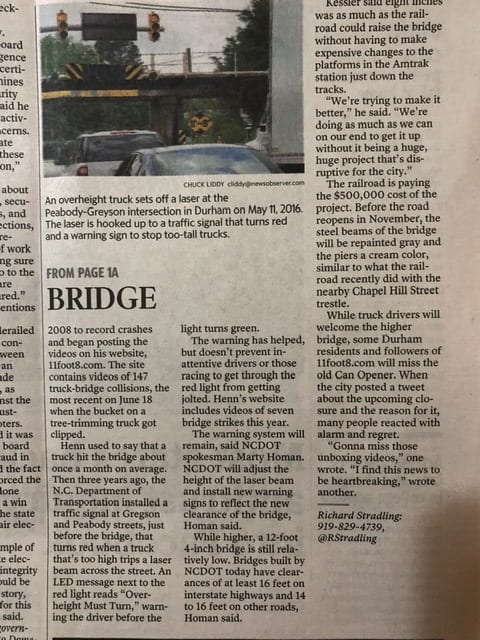That's 10,000 tow operators on 24 hour standby; though it is not a universal fix. Some of the collisions have destroyed the bridge. I saw one in Florida where a back-hoe clipped through all the bottom strands of the post-tension cables on one of two beams of a pedestrian walkway. The road was closed over fear of collapse for about 2 weeks until the bridge was demolished. Makes the FIU response look especially poor as the visible volume of damage was not nearly as much.
Another similar collision not only tore out the post-tension cable, but also punched out the entire web of an outer concrete beam.
The reason for all trucks is that in New York state there is a no-trucks parkway that would easily cost half a billion dollars to replace all the overpasses, apparently designed in the 1940s, and truck and semi drivers routinely ignore no-trucks signs and either get stuck, get demolished, or creatively, straddle the lanes to position under the high part of the archways.
The finders fee for avoiding a half-billion dollar fix would be a nice retirement. And would go far in keeping 36 ton trucks off of 8 ton pedestrian and light traffic bridges.
Another great source of revenue is keeping both heavy equipment such as high lifts and backhoes from being overheight (above 16'6" Federal highway limits) but also dump trucks from driving about with raised beds that seem able to reach 30 feet. Maybe all overpasses need to be 50 feet, just to be sure. In any case, the dump trucks are an especial menace as they stop the truck bed in under a second, can bring down highway spanning steel sign supports that can easily crush most cars, can punch out structural members force long term overpass closures. All because the driver has no situational awareness.
The challenge there is simple, but the circumstances are not.
The driver will cut wires and do any splicing required to stop any alarm or flashing light from distracting them on the job site where moving the truck with the bed up is necessary. I've seen it done on military equipment by enlisted workers where they "accidentally" damaged the warning beepers. Over and over again.
It can also not add any cost or have any other failure modes. Trucking firms don't want to pay for upfront or maintenance costs. It will have to last at least 30 years.
And it cannot depend on the driver to take any other action.
But it has to guarantee the bed is fully down on the stops when it is on the road, even if the PTO is engaged and the Bed-Up switch is on.
This is separate from the bridge challenge, but it would also avert injuries and deaths every year and hundreds of millions of dollars in infrastructure and personal property damage.



